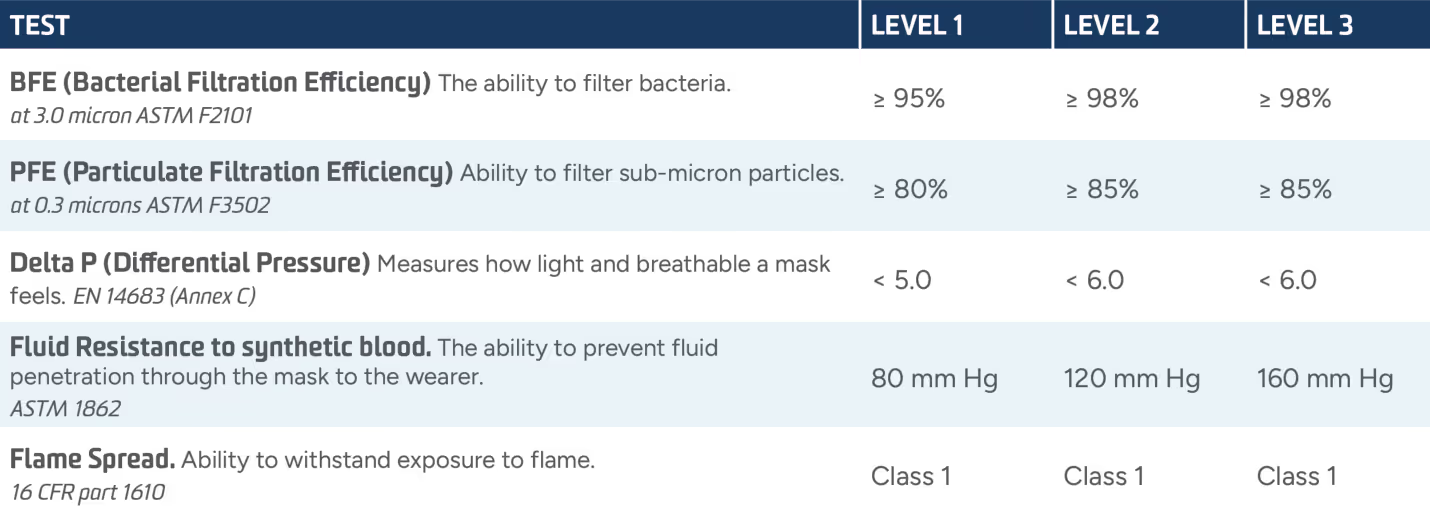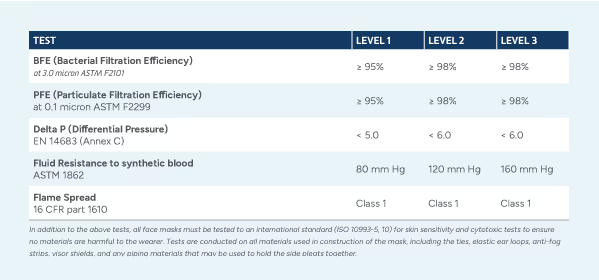Surgical Tie Masks
- Available in ASTM Levels 1, 2, and 3
- Soft and stretchy ties allow for a comfortable and tailored fit
- Hypoallergic option for individuals with skin sensitivities
- Anti-fog enhancements available for optical clarity when wearing eyewear
- Attached visor option for all-in-one facial and eye protection
SKU List





Updated ASTM F2100-23 Test Chart
Key Updates:
- PFE Test Method Changed: ASTM 2299 to ASTM 3502
- PFE Thresholds Lowered: Level 1 now ≥ 80% (previously ≥ 95%), Levels 2 & 3 now ≥ 85% (previously ≥ 98%)
- All Other Test Data Remains Unchanged
at 3.0 micron ASTM F2101
(Updated to ASTM F3502)
EN 14683 (Annex C)
ASTM 1862
16 CFR part 1610
ASTM F2100 Standards
The ASTM F2100 Standards outline the performance metrics for medical face masks. There are three levels of protection ranging from low barrier to high barrier to meet different levels of fluid resistance and filtration abilities.

In addition to the above tests, all face masks must be tested to an international standard (ISO 10993-5, 10) for skin sensitivity and cytotoxic tests to ensure no materials are harmful to the wearer. Tests are conducted on all materials used in construction of the mask, including the ties, elastic ear loops, anti-fog strips, visor shields, and any piping materials that may be used to hold the side pleats together.
FAQs
Are there different levels of protection with ASTM-rated medical masks?

Do PRIMED face masks contain Nanoform Graphene?

How do I know if my earloop mask is on correctly?

How long is my medical face mask effective?

What are ASTM standards for medical face masks?

What else should I know about medical face masks?

What is ASTM?

Why is the fit of a medical face mask important?




